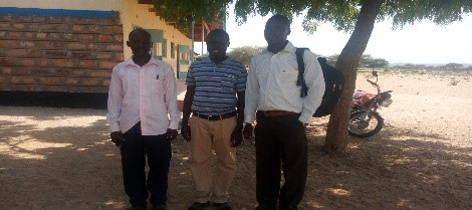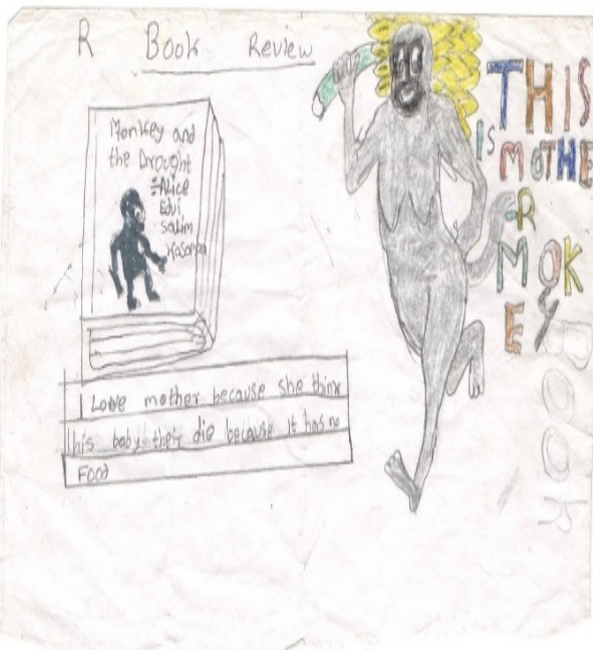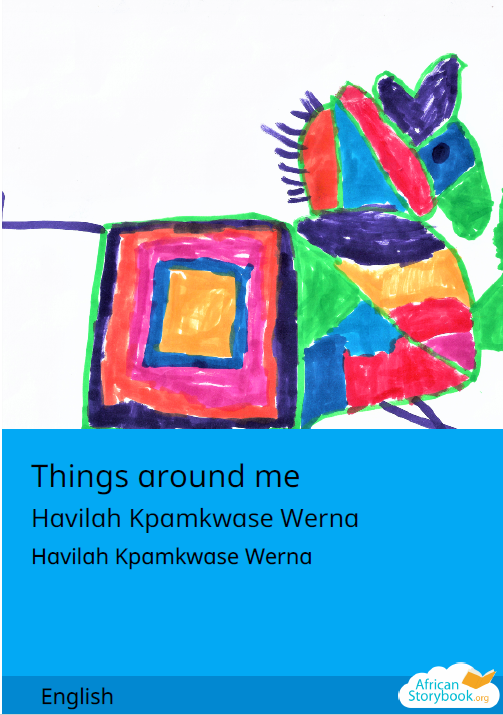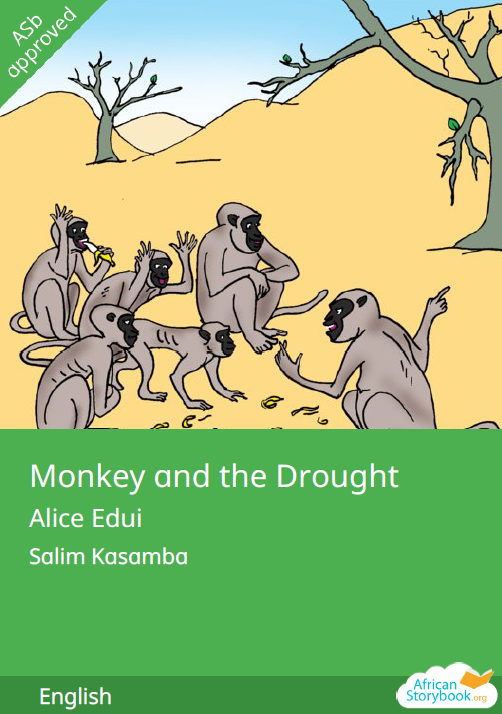Highlights from African Storybook community champions in Nigeria and Kenya, 2019
African Storybook
Introduction
By Dorcas Wepukhulu
Saide has invested in identifying and nurturing community champions in some African countries. They are actively spearheading the use of and contribution to the African Storybook initiative. Read about this strategy of champions as demonstrated by Mimi Werna’s efforts in engaging children to write and publish their own stories on the website; about Teacher Simon Ipoo sustaining literacy activities in his school and other schools; about Terkule Aorabee and the links he is making between the ASb books and current environmental concerns; and, about Teacher Geraldine Nanjala’s school being the best user of the government tablets.
By Mimi Werna, Nigeria
My most exciting time working on my ASb activities this year would be the time I spent in Benue State, Nigeria, 281km from Abuja to Makurdi; and guiding my 5 year old daughter to illustrate and write her first book, now published on the ASb website!
I visited Makurdi in Benue several times to determine my budget for the celebration of the International Day of the African Child. The day which was celebrated on June 15th, was sponsored by Jireh-Doo Foundation (JDF). ASb’s Africa Unity Race set the tone for the day at Aminu Isah Kontagora Theatre Complex in Makurdi where 27 schools sent participants (school owners, parents, teachers and students). These 27 Schools have a population of over 8,000 learners.
To reflect the torch carried during the Africa unity race, we placed a pot of fire at the centre of the stage where it burned from the beginning of the 3 hour event. During this time, 9 schools performed in dance, music, poetry and drama! My play titled The Patched Calabash, directed by Dr. John Onah of Benue State University, was performed by Ebony Theatre Troupe. This play highlighted the different issues plaguing the African (Nigerian) child with solutions woven into the discussion between 3 friends during a courtesy call, sequel to a wedding.
After this drama, I had 20 minutes presenting about ASb and ASb stories using slides. To explain the significance of the burning fire, I read Africa Unity Race after which the Jireh-Doo Foundation’s Founder and National Coordinator, announced their Gender Based Violence (GBV) Helpline after which we handed candles to all the stakeholders present to light a fire from the burning pot to stand for the right of every child along with a charter that they all signed.
Young Illustrator/author alert!
I have been having read aloud sessions or story time with my children every day where ASb books feature at least 3 times a week since I ran the ASb reading challenge in August 2018! Now my 5year old daughter can read for pleasure and meaning all by herself but sometimes needs help. When she realized the significance of the names on a book cover, she decided she would grow up to become an illustrator since she loves to draw.
She drew pictures and wrote her first story titled: Things around me. She has been so excited about this, it’s unbelievable! She has now made a habit of asking her friends and adults to visit the website and to read her book along with all the other stories she has read and enjoyed on the website.
Teacher Simon Ipoo is an experienced teacher teaching in Turkana County, one of the poorest of the 47 counties of Kenya. Read his story of how he supports a fellow teacher in a school closer to his own, to use the African Storybook local language books and a set of equipment donated by Saide, to motivate children to read, therefore, making a difference in that school and the community around.
By Teacher Simon Ipoo, Kenya
Stanley Cheboi, a teacher at Kakwanyang Primary School has broken the odds to extend his services to evening sessions to ensure children love reading stories. He is a non-Ng’aturkana language speaker and one of two teachers residing in the school compound. Although he himself is not a native speaker, he says children love to read in Ng’aturkana. The first time they see the story text, they take time to recognise the words but when they read the story a second time, they are familiar and are able to recognise words and talk among themselves. He says it is easier for children to read the story when it gets dark because during the day, it is too bright which hinders visibility.

The school sits in the heart of Kakwanyang village and makes it easier for the teacher to assemble children for the evening reading sessions. Teacher Cheboi says children’s love of story reading sessions is the main driver of this initiative. Immediately after taking their supper at home, the children assemble in the school compound and invite their teacher for the story session. The children assist him to set up his computer and projector in the classroom and use the wall for the screen. Once done, they take their positions to read the stories of their choice. Teacher Cheboi sits and monitors as his children read the animal stories they love most.
This initiative has made the teacher a darling of his children. Parents too, often accompany their children to witness the great innovation. Although children are not supposed to be out of home at such odd times, the parents have trust and have great support for the initiative. They look at the value of the initiative on their children’s education rather than the inconvenience of time.

Teacher Cheboi says, if he delays setting up the equipment in the evening, children would come to his house to remind him that it was time for story reading. He further says that, during the day, it is difficult to project stories on the wall because it is too bright and there is no screen to project on. He says his evening programme has served as an alternative to traditional storytelling, and it is working well.
To ensure he sustains the children’s motivation and curiosity towards the reading of stories, Teacher Cheboi selects stories of different reading levels and those that are so interesting from the African storybook website and stores them on the African Storybook laptop, from where he chooses one for reading every evening. He has also mastered the stories that the children like and prefer. He ensures that local stories about animals, are available for reading.
The school head teacher and his colleagues have given him support. He has almost all-time access to school facilities for use even during odd hours. During weekends, Teacher Cheboi spends time in school with a few children who freely go to read for pleasure the print versions of the African Storybook books that he issues to them.
Teacher Cheboi’s story is a testimony of how an individual’s effort can motivate and translate ideas to achievements. He says his learners have improved a great deal in the way they perceive things, the way they read and how they express themselves.
By Terkule Aorabee, Nigeria
Jalingo Reading Campaign 2019: Using Saide’s ASb Resources
The event that has become an annual campaign was held on the 8th July, 2019 at Federal Government Girl’s College (FGGC) Jalingo. This year’s theme was: Preserving Nature and Culture for the Future.
I considered the frightening facts that the world is under the threat, and yet, preventable environmental disasters: Deforestation, desertification, global warming, shrinking lakes and rampaging ocean surges and resultant erosion. Farmer-herder clashes are consequences of harmful environmental practices. Similarly, some African languages are fast going into extinction.
At the centre of these effects are the children whose future is bleaker than what we experience today if children are not sensitized on prevention measures. We used Saide’s African Storybook digital platform to promote Environmental Protection and Conservation, conservation of Taraba indigenous languages and to promote the reading culture among children and youth.
To this effect, translation of storybooks into several Taraba languages and selecting storybooks relevant to the theme from the ASb website were printed and or read online to create awareness among the local community. Languages so far published on the www.africanstorybook.org used at the event were Mumuye, Mambilla, Kuteb, Fulfulde, Tiv and Jenjo. There is more translation happening in other languages.
Requirements for participation in the reading campaign
Invitations were sent to schools within Jalingo and Ardo Kola through Post-Primary Schools Management Board (PPSMB), State Universal Basic Education Board (SUBEB), and National Association of Proprietors of Private Schools (NAPPS). Primary schools were to select five pupils (Primary 1-6) and JS1-3 (only) for secondary schools. Selected learners were guided by teachers or parents to log on to www.africanstorybook.org and download and read the following storybooks:
- A Tiny Seed: The Story of Wangari Maathai by Nicola Rijsdijk (Primary 1-6, JS1-3)
- I love Forests by Gertrude Kabusinge (Primary 1-3)
- Decision by Ursula Nafula (primary 4-6, JS1-3)
- Elephant and Hippo by Terkule Aorabee (JS1-3)
- Big-head Ant and lazy Pigeon by African Storybook (Terkule Aorabee) Primary 1-6)

Participants who included children, cultural language groups and education officials got copies of storybooks encouraging environmental conservation in the following languages:
- Protect our Environment (200 copies)
- I love Forests (200 copies)
- Tiny Seed: The story of Wangari Maathai (Mambilla) 100 copies
- Tiny Seed: The story of Wangari Maathai (Jenjo) 100 copies
- Tiny Seed: The story of Wangari Maathai (Mumuye) 100 copies
- Tiny Seed: The story of Wangari Maathai (Fulfulde) 100 copies
- Tiny Seed: The story of Wangari Maathai (Kuteb) 100 copies
By Teacher Geraldine Nanjala, Kenya
Ndege primary had 5 April holiday library sessions. The activities were: individual reading, spelling competitions, Read Aloud and literacy games. I had 75 learners ranging from Grade 1-8. The number reduced as days went by but we noticed that girls are the greatest library users.

Term two begun on April 29th 2019. Ndege School has a population of 780 learners, and all use the ASb stories for library lessons and other reading sessions. When the number of library users swells, I use older students to supervise the younger ones. When schools are on, female teachers use the library more than the males because it is them who most teach languages. Ndege has 17 and 3 male teachers. In total 18 teachers (including 1 male who teach languages) are using ASb books.
On 30/7/2019, during a normal afternoon library lesson (1hr 20min), 41 Grade Two learners read the story Monkey and the Drought after which they reviewed it. They expressed the story in picture form as they understood it. Below are two examples of drawings by two learners as they imagined and recreated the story.
This learner chose to change the title to: This is Mother Monkey. She explains: “I love mother because she think this baby they die because it has no food.”

A Grade Five learner who has difficulty reading text, chose to represent the story in picture form and was able to talk about the story using the pictures as the others listened. Book review has become a favourite activity in the school.
The Ministry of Education Team of tablet inspectors have rated Ndege School as the best tablet users in the region and recommend other schools to bench mark and borrow a leaf. We hope to do even better.



